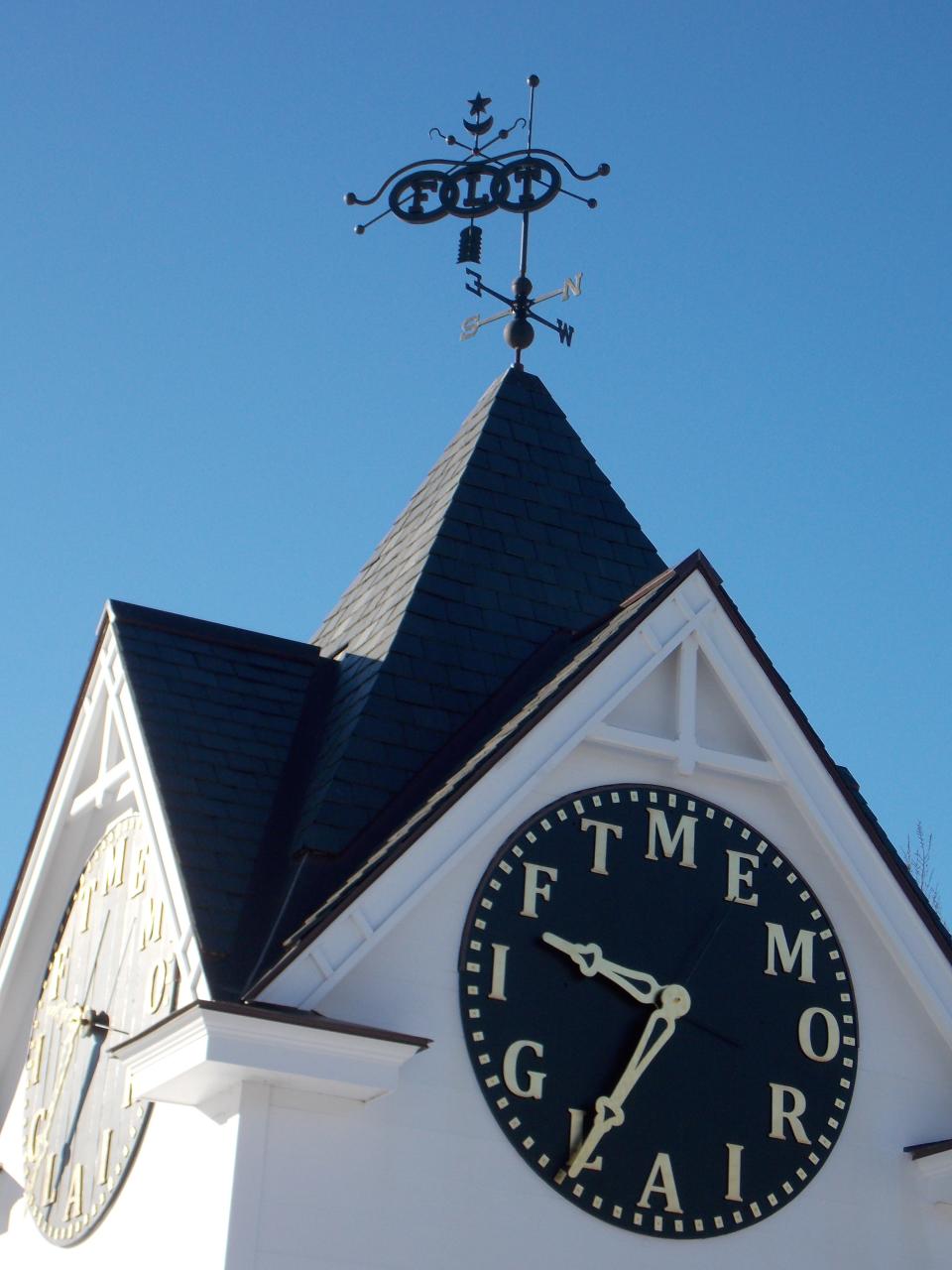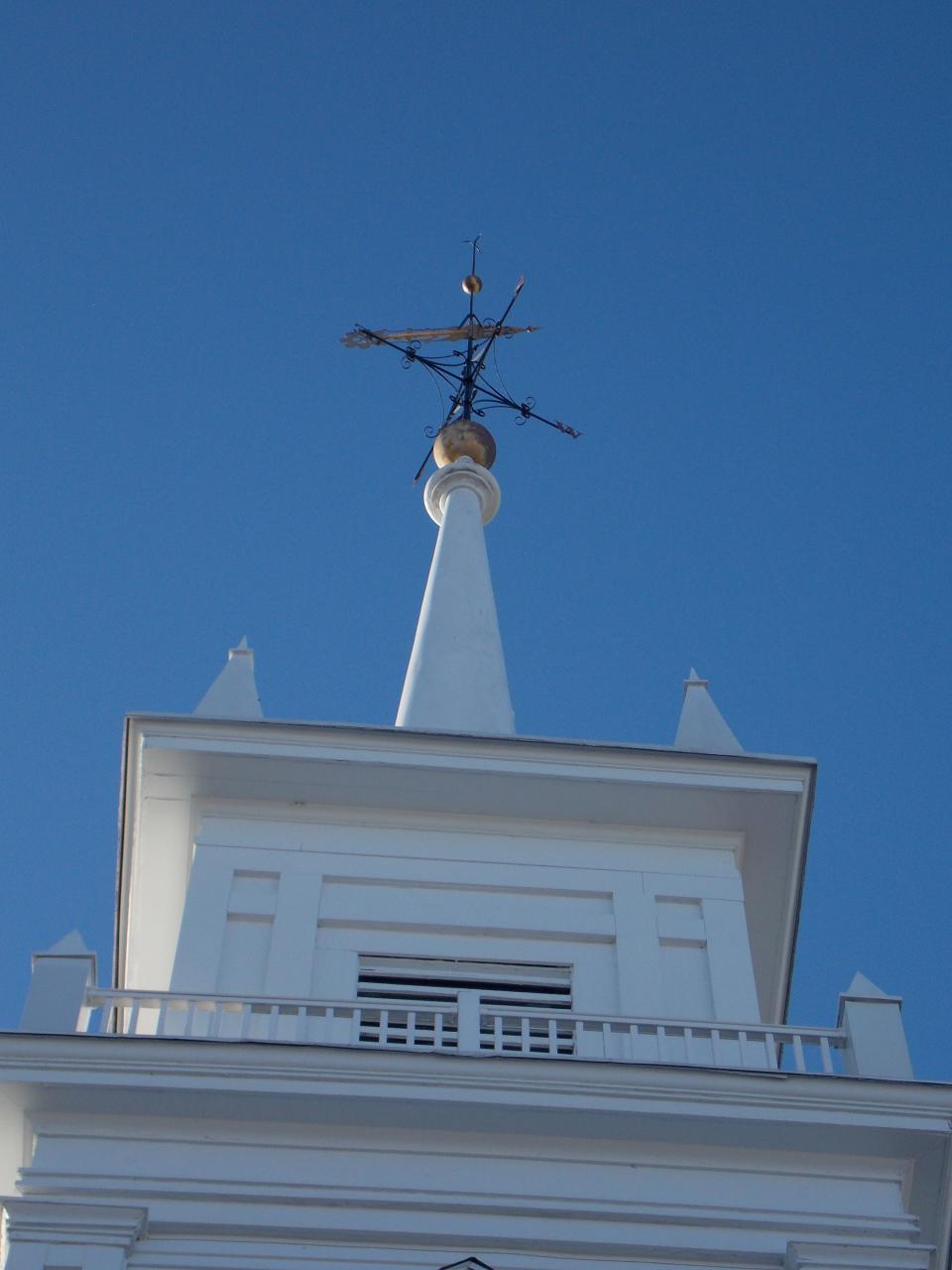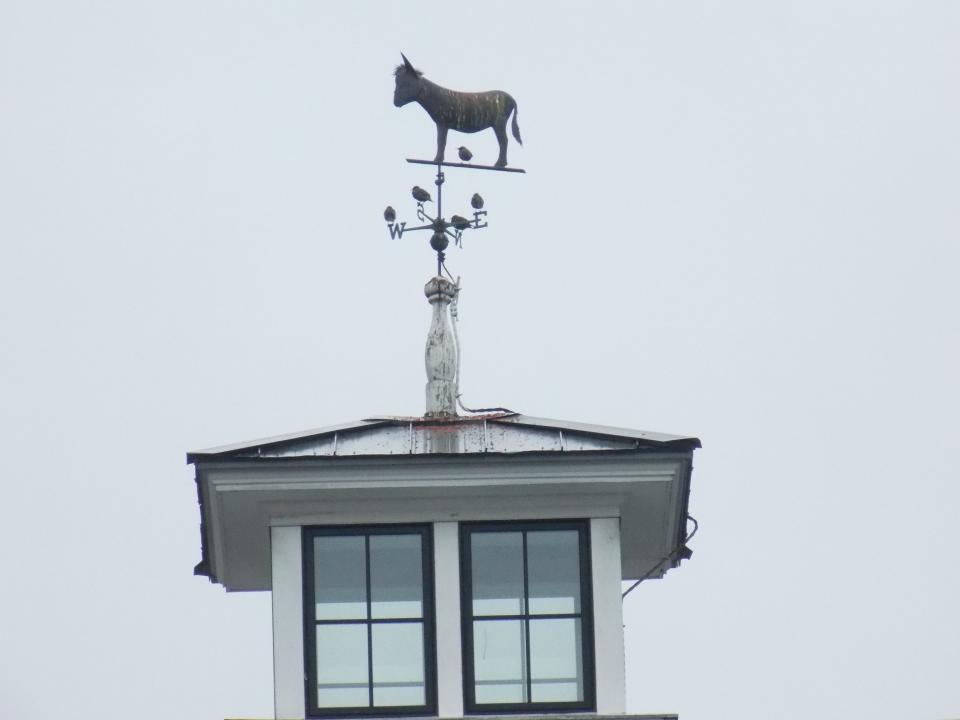Look to the sky: Decorative and historic weathervanes on the Seacoast
Look up to the sky on pinnacles, cupolas, at the top of barns, churches, businesses, and homes. There you will find, turning in the wind, the functional art form known as the weathervane.
At one time, the reading of the weathervane would tell for mariners, farmers, shopkeepers, pilots, and citizens the way that the wind was blowing, and they would plan their business, crop planting and time outside accordingly.

A dizzily spinning weathervane meant head inside or batten the hatches, a wind from the south would mean warmer, moister air was approaching and a wind from the north meant cooler, dryer air was on its way. A weathervane tells the direction that the wind is blowing from. If the wind is blowing out of the west, then the arrow or character on the vane points west.
More: Best dollhouses including one on display at Hampton’s Tuck Museum
This simple weather instrument has been used since ancient times. The earliest recorded weathervane honored the Greek god Triton. It adorned the Tower of the Winds in 48 BC Athens. In the 9th century, the Scandinavians used wind vanes on their ships and churches. Pope Nicholas I, of the Catholic Church, around the same time, decreed that all churches be ornamented with a rooster-shaped weathervane; to remind followers of the betrayal of Jesus by Saint Peter before Christ was crucified. Archers in the Middle Ages used weathervanes to judge the direction of the wind to help in battle. In America, the first recognized weathervane maker was Deacon Shem Drowne. He created the famous grasshopper vane atop Boston’s Faneuil Hall.
Weathervanes recently have taken a backseat to technology. Today they are partly useful but mostly decorative.
Keepers of the light: Hampton’s lighthouse keepers from a bygone era
In the Seacoast of New Hampshire, there are numerous weathervanes, some decorative some historic.
At the Tuck Museum of Hampton History atop the pinnacle of the Leavitt Barn is a weathervane of a saw. Betty Moore of the Tuck Museum states that, “The original wooden saw is now on display in the restored barn. When the barn was restored, we realized that the wooden weathervane needed to be replaced with a vane that would last through time, protecting the historic wooden saw it was replaced with a metal saw weathervane.”
Over on the lawn of the Centre School on Winnacunnet Road is the restored clock and bell from the Odd Fellows Block in downtown Hampton. Historian Elizabeth Aykroyd says, “The bell was first struck on July 17, 1897, and it was last heard at 3 a.m. on January 27, 1990, when the Odd Fellows Hall was engulfed in flames.” Today the clock strikes on the hour encased in a specially built structure with a replica of the original Odd Fellows weathervane atop the clock tower. The symbols of the International Order of Odd Fellows, which stand for friendship, love, and truth decorate the weathervane along with other symbols of the organization. This new weathervane was built and donated by Skip Heal of Northeast Lanterns in Exeter. The whereabouts of the original weathervane is a mystery. It disappeared after the Odd Fellows Block fire in 1990.
On the steeple of the First Congregational Church of Hampton is displayed a weathervane painted gold. There on the steeple attached to a large gold orb, the four directions extending on decorative lengths, the weathervane shines impressively on a sunny day. This weathervane does not outshine one of its predecessors, which stood atop the steeple of one of the several Congregational Churches in Hampton and today is on display at the Tuck Museum. It is thought to have come over from England; a wood-based weathervane with a metal rod on the upper part and a bird vane and a hex ball below the shaft. It was used as a weathervane on the log cabin replica by the Meeting House Green Association in 1925.

The historic James House on Towle Farm Road had a rooster weathervane at the pinnacle of the barn as photos tell the story. In 1996 the barn collapsed and burned. The weathervane was stolen. It is well known that there is a market for old weathervanes especially if they have historic provenance. Recently a weathervane sold for $300,000, a rooster with historic ties to Newburyport, Massachusetts. A story is told of a helicopter taking a 150-year-old weathervane from a barn and replacing it with a cheap replica. The owners when they found out the original had been stolen had no clue when the theft had taken place.
In North Hampton at the Hobbs Farm now known as Throwback Brewery, a special weathervane of a donkey tops one of the cupolas on the historic barn, a pig sits atop the other cupola. The donkey represents Jericho who died in 2015 after 27 years of parading in the pasture of the Hobbs Farm. Jericho had been a local icon. Throwback honors the white donkey with the weathervane and a beer named Donkey-Hote.

All around the Seacoast, there are weathervanes to be seen. Uptown, the TD Bank has an eagle weathervane as does the Shaw Block. There is a vane at the CVS complex and a fish-like vane atop Tinos Kitchen and Bar.
Historically Speaking: Hampton and the American Revolution
Look to the sky almost anywhere, you will find weathervanes: animals, cars, birds, Indians with arrows, mermaids, horses, ships, butterflies, and trains. The one I find most unique so far in my weathervane quest is at the restaurant Vida Cantina on Lafayette Road in Portsmouth. Their weathervane sits atop a cupola painted turquoise blue with a weathervane of a man in overalls and hat raking wheat. Unique I would say but I am just beginning to find it interesting and fun to look for weathervanes in the Seacoast. Probably best to do it when you are the passenger rather than the driver.
Karen Raynes is a member of the town’s Historical Society.
This article originally appeared on Portsmouth Herald: Decorative and historic weathervanes on the Seacoast, NH

